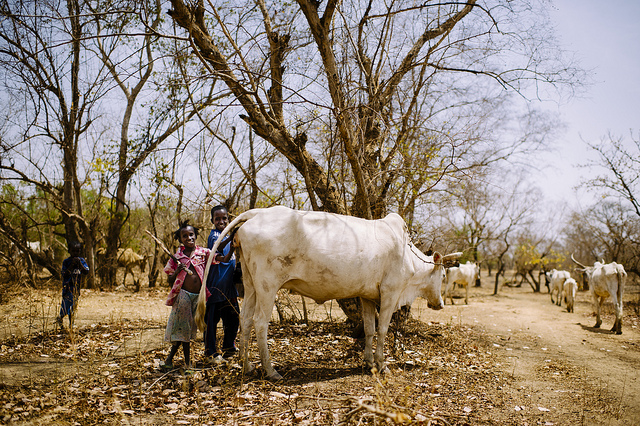Despite a decline in numbers in the last few decades, nearly 800 million people around the world still don’t have enough food to eat.
About 2 billion people are not getting enough of at least one kind of micronutrient, which are essential for good health.
Many food-insecure people live in the world’s tropical regions, some of which are home to dry forest environments.
A recent article published in a special edition of International Forestry Review examined how dry forests contribute to the nutrition of those living nearby to determine whether there are nutritional benefits of dry forests that may not be found in other areas.
“We know from anthropological and ethnobotanical studies that wild foods are important in the culture and diets of many communities,” says Dominic Rowland, a Center for International Forestry (CIFOR) research consultant.
“Economic studies have shown that they are key for some communities as sources of income, and food science studies indicate that some wild foods are of high nutritional quality.
“All these things together suggest that they are important for nutrition.”
DRY FOREST, WILD FOOD
A 2006 study done in Thailand, for example, identified 134 species of wild edible plants, including leaves, stems, roots, fruits, flowers and shoots.
The study also showed that among the ethnic Karen people, who live in the dry forests of Western Thailand, every year each household on average ate 176 kilograms of leaves, 115 kilograms of stems, and 133 kilograms of wild fruit.
As researchers, we are interested in whether people living in forested areas and eating forest foods have better diets than people living in similar areas without forests
Dry forests also provided an important source of bushmeat, ranging from small rodents to large mammals like hippos and elephants. A 2012 study found that people living in rural areas of the Yucatan Peninsula, Mexico ate nearly 5 kilograms of wild bushmeat per person every year. Households in the Argentine Chaco ate wild meat nearly eight days a month – a higher proportion than for chicken and pork, according to 2006 research.
MICRO NUTRIENTS: MACRO IMPORTANT
Despite these studies, there remains a lack of understanding of how much wild foods contribute to nutrition, Rowland says.
Researchers combed through some 2,500 papers until they uncovered one that focused on the consumption of wild foods and addressed nutrition in dry forests. Only four papers quantified the consumption of wild food, while only one described wild food in the context of the entire diet.
“As researchers, we are interested in whether people living in forested areas and eating forest foods have better diets than people living in similar areas without forests,” Dominic Rowland says.
“We suspect that they do, but in trying to find out whether or not this is the case we first need to find out what and how much people are eating in these areas compared with similar people in non-forested areas,” he added.
However, the research team found no studies that would allow for such a comparison. They call for more cross-disciplinary research that brings together the technical expertise of nutritionists with the knowledge of ecologists, economists and social scientists working in dry forests.
In order to address hunger and malnutrition, it’s also important to know the nutrient content of the foods being eaten.
In the tropical and subtropical countries where dry forests prevail, high rates of iron, zinc, and vitamin-A deficiencies are common, he says.
These deficiencies can cause problems like fatigue, weakness, immune system issues, blindness and, cruelly, loss of appetite.
Understanding the forest’s contribution to nutrition can help lead to better forest management. It can also help relieve communities of hunger, by ensuring that they don’t lose access to important foods from the forests.
“This research is trying to demonstrate the importance of forests for local people,” Rowland says.
“This helps us understand what the potential consequences are if forests are lost,” he continues. “So if we find that forests are important for nutrition, deforestation may lead to poorer nutrition unless other sources of food can replace wild foods.”
For more information on this research, contact Dominic Rowland at d.rowland@cgiar.org
CIFOR’s research on dry forests is supported by USAID and the UK Department for International Development and forms part of the CGIAR Research Program on Forests, Trees and Agroforestry.
We want you to share Forests News content, which is licensed under Creative Commons Attribution-NonCommercial-ShareAlike 4.0 International (CC BY-NC-SA 4.0). This means you are free to redistribute our material for non-commercial purposes. All we ask is that you give Forests News appropriate credit and link to the original Forests News content, indicate if changes were made, and distribute your contributions under the same Creative Commons license. You must notify Forests News if you repost, reprint or reuse our materials by contacting forestsnews@cifor-icraf.org.

